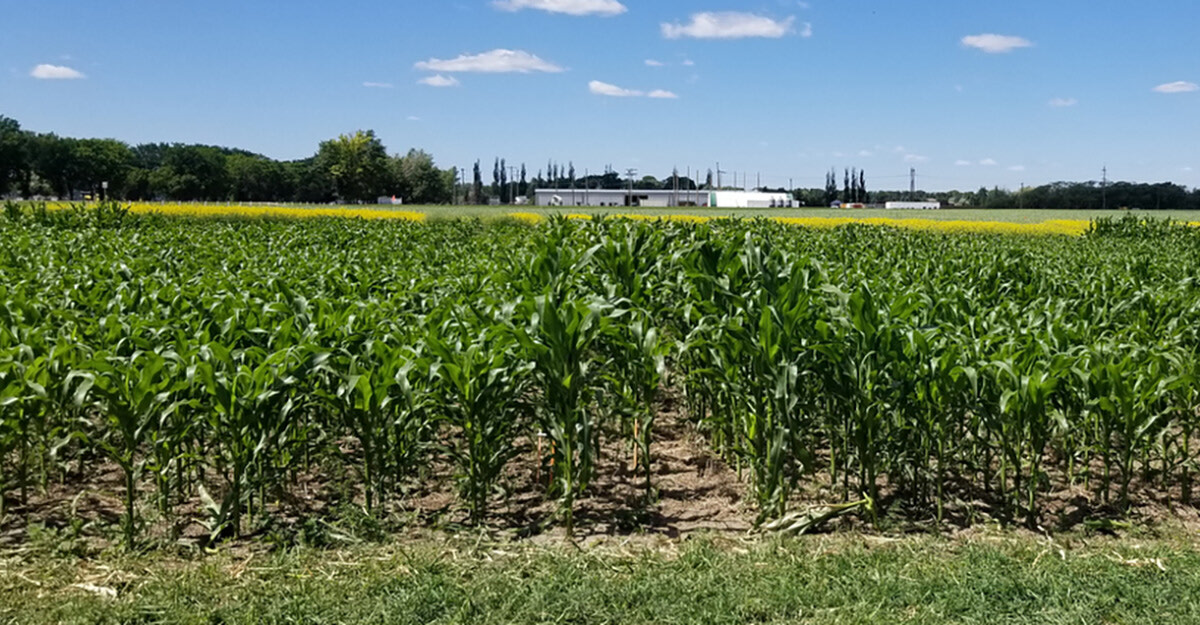Project AbstractDouble cropping offers the potential to optimize land use and enhance agricultural productivity by growing two silage crops on the same field within a single year. It has recently gained the attention of beef cattle feed producers in southern Alberta as a means to maximize yield on a single parcel of land. The warm climate, long growing season, and availability of irrigation water throughout the region makes this practice a potentially crucial advancement in agricultural efficiency and sustainability. Beef cattle feed producers require information that outlines the approaches that are highest yielding and will produce the highest quality feed for beef cattle. Recent improvements in crop genetics and the introduction of new crop options to the region like hybrid fall rye and short season corn underscore the need for updated research. This project aims to evaluate the optimal double cropping strategies for beef cattle feed production under irrigated conditions. The three key aspects of double cropping systems this project will review are:
These factors will allow us to identify the best-performing winter crops, optimal harvest timings, and the most suitable second forage crop options to maximize yield quality for beef cattle feed. This knowledge will help enhance agricultural productivity, improve water and nutrient use efficiencies, and improve economic outcomes for beef cattle producers in southern Alberta and ensure long-term viability for beef cattle feed production. |
|
||||||||||
Project Objectives
|
Our main objective in this study is to evaluate the best crop types and harvest timings to maximize yield and quality in double cropping systems for cattle feed production under irrigation in southern Alberta. The specific objectives we plan to achieve are: |
|
|
|
|
Methods |
|||||||||
|
|
||||||||
|
The plots will be directly seeded into canola stubble using no-till plot drills equipped with commercial style seed delivery systems, openers for seed placement, and fertilizer application in order to properly replicate on-farm planting scenarios. Cereals will be planted with the Wintersteiger flex plot air seeder on 24.1cm (9.5”) spacing with Bourgault disc openers. Target sowing density are about 400 plants m2 for hybrid fall rye, winter wheat and winter triticale. Corn and sorghum will be planted with a monosemy vacuum planter on 38.1cm (15”) rows. Each plot will measure 2m by 6m. All seeds will be treated with a dual fungicide/insecticide. Pre-seed herbicide application will follow recommended practices to prevent any potential interference with crop establishment, growth, or development. Nitrogen, phosphorus and potassium will be applied based on the soil test results. Winter crops will be seeded on the same date in early September each year (depending on weather conditions). Second forage crops will be seeded as soon as possible (2-3 days) after winter crops have been harvested and removed from plots. Second crops are therefore planted at two timings (in the 2nd week of June and the 4th week of June) to align with the two harvest timings and will be seeded on the same day as other crops in the same experimental factor. |
Measurements
|
|
|
|
|
|
|
|
|
Results
Sign in or subscribe to view
Results
The first year of this project is underway! We hope to have preliminary results ready for your in 2026.
Recommendations
The first year of this project is underway! We hope to have early recommendations ready for your in 2026.
Media
Keep an eye out for exciting updates from the field on this project!

